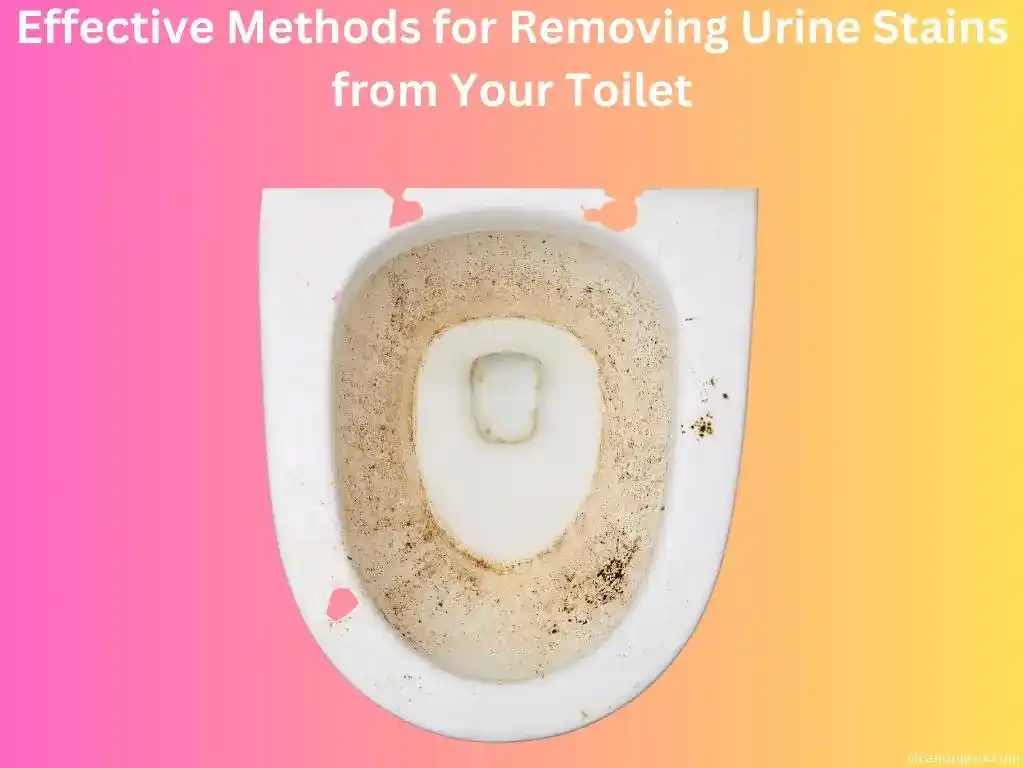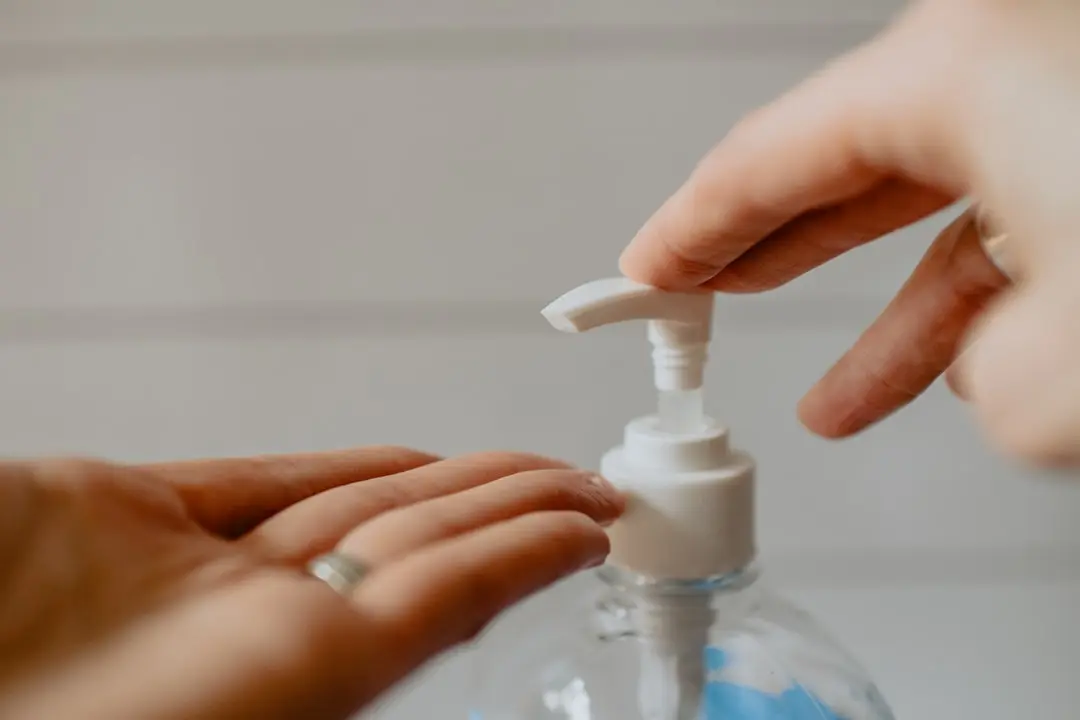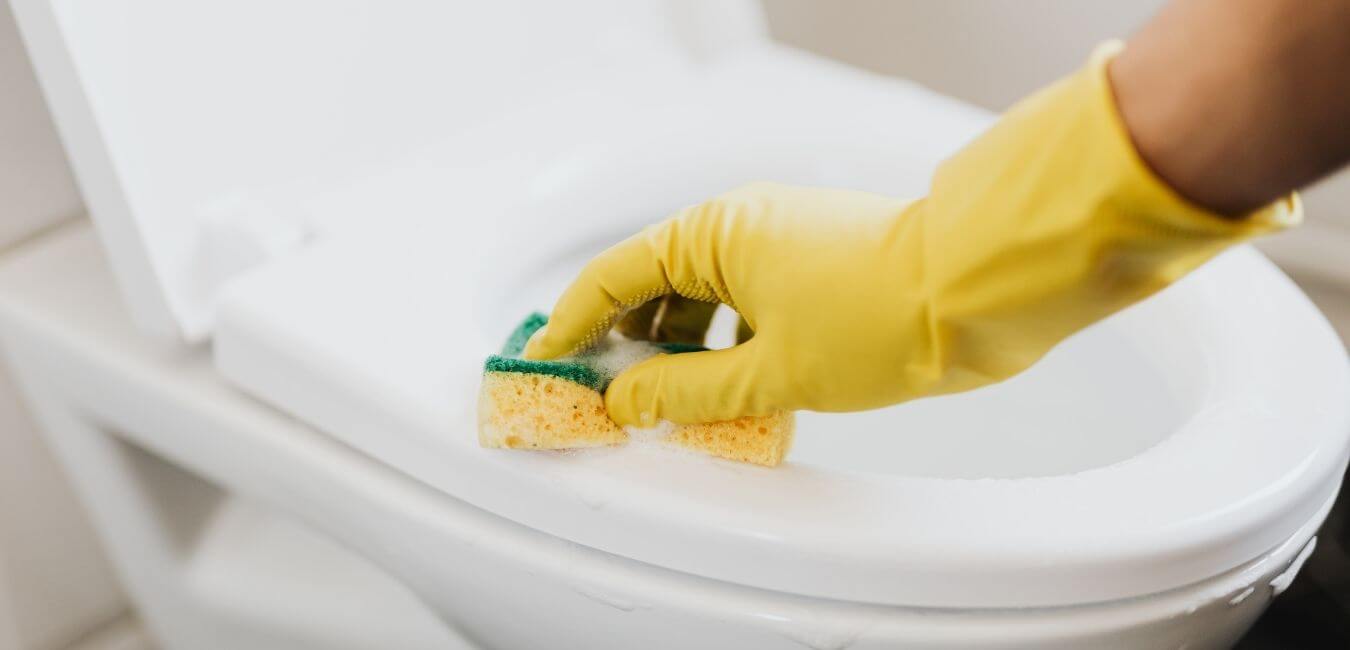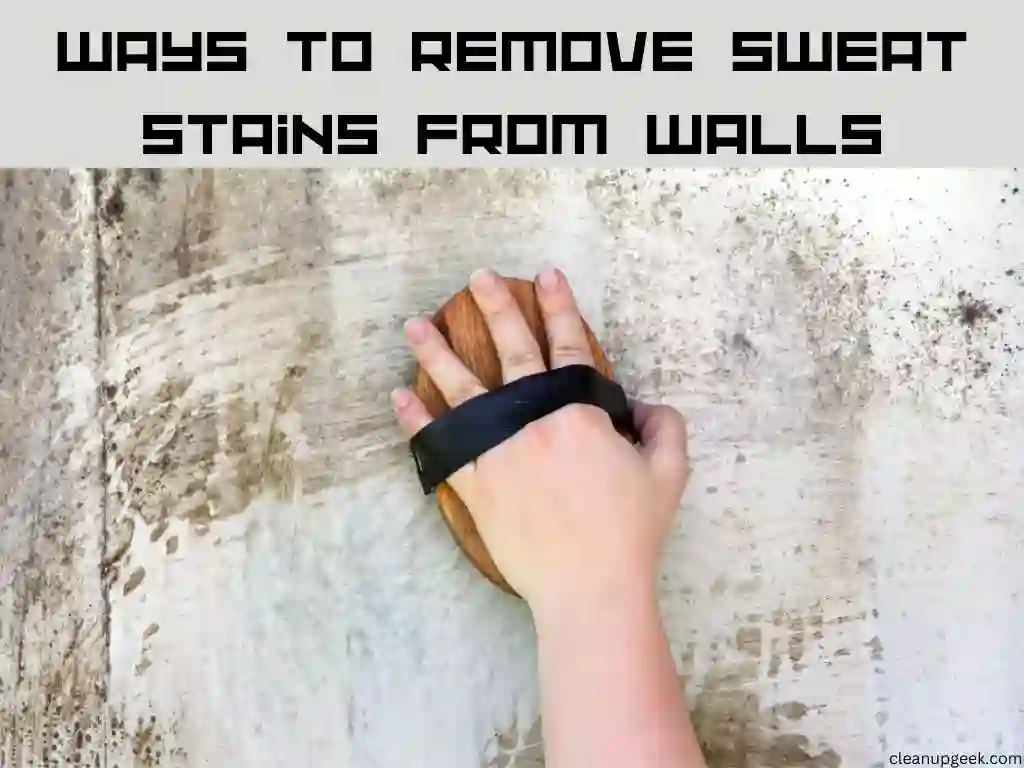Urine stains in your toilet can be embarrassing and unpleasant to deal with. Did you know these stubborn brown or yellow marks are caused by a variety of factors, like poor aim or even overflow?
Our informative guide is here to arm you with effective methods for removing these urine stains and tips on keeping them away for good.
Let’s dive into this comprehensive resource and restore the sparkle to your toilet once again!
KEY INFORMATION
- Urine stains in your toilet can be caused by factors such as poor aim, overflowing toilet bowls, splashback, and urine leaks.
- To remove urine stains, you can use cleaning solutions like vinegar and water, baking soda paste, or natural remedies like lemon juice.
- Scrubbing with a pumice stone or using hydrogen peroxide/bleach can also effectively remove urine stains from the toilet.
- Preventive measures include encouraging good hygiene practices, regular cleaning of the toilet bowl and base, installing splash guards or seat covers, and providing proper training on toilet usage.
Causes of Urine Stains on the Toilet

Urine stains on the toilet can be caused by poor aim, an overflowing toilet bowl, splashback, or urine leaks.
1. Poor aim
Bad aim is a big cause of urine stains. The pee misses the toilet bowl and lands on the floor or seat. It creates hard-to-clean spots over time. This happens more in homes with boys or men who stand while peeing.
Teach all users to aim well into the bowl. Also, tell them to wipe up any mess right away. This helps keep your toilet stain-free for longer.
2. Overflowing toilet bowl
If you have an overflowing toilet bowl, it can lead to urine stains that are difficult to remove. The excess urine can spread on the floor and walls around the toilet, leaving unsightly stains.
To tackle this issue, start by addressing the overflowing problem. First, turn off the water supply valve behind or near your toilet to stop more water from entering the bowl. Next, use a plunger to try and clear any blockage in the drain pipe causing the overflow.
If this doesn’t work, you may need to call a professional plumber for assistance. Once you’ve resolved the overflowing issue, you can then focus on cleaning up any urine stains left behind.
3. Splashback
Splashback is a common cause of urine stains on toilets. When urine hits the water in the toilet bowl, it can splash back up and leave unsightly stains on the seat or rim. To prevent this, it’s important to encourage good aim and proper technique when using the toilet.
Additionally, installing a splash guard or using toilet seat covers can help minimize splashback and keep your toilet clean. If you do have urine stains from splashback, be sure to use an effective cleaning solution and scrub gently with a brush or sponge to remove them completely.
Regular cleaning and maintenance will also help prevent future stains caused by splashback.
4. Urine leaks
Urine leaks can be one of the causes of urine stains in your toilet. When urine leaks, it can seep into the areas around the toilet bowl and leave unsightly stains. To remove these stains, you can use a cleaning solution or natural remedies like lemon juice and baking soda.
For effective removal, make sure to scrub the stained areas with a toilet brush or a wet toothbrush using a soft scrubbing action. Preventing urine leaks in the first place is important.
Encourage good hygiene practices and provide proper training on toilet usage to avoid any accidents.
Factors to Consider When Removing Urine Stains

When removing urine stains, it’s important to consider factors such as the material of the toilet seat, the cleaning products and solutions you use, and the safety precautions you take.
Read on to learn more about these essential considerations.
1. Material of the toilet seat
The material of the toilet seat is an important factor to consider when removing urine stains. Different materials require different cleaning methods to avoid damage. For plastic or resin seats, you can use a mild cleaner and a soft cloth or sponge.
Avoid abrasive cleaners or scrub brushes that can scratch the surface. If you have a wooden seat, be careful not to saturate it with water as it can cause warping or staining. Use a gentle cleanser and wipe dry immediately after cleaning.
To clean a padded seat, check the manufacturer’s instructions for specific care recommendations. Remember to always follow safety precautions and use appropriate cleaning products for your toilet seat material.
2. Cleaning products and solutions
To effectively remove urine stains from your toilet, it’s important to use the right cleaning products and solutions. One effective solution is a mixture of equal parts white vinegar and water.
This can be used to clean both the toilet bowl and seat. Another option is using baking soda, which can be sprinkled onto stained areas and scrubbed with a wet toothbrush. For tougher stains, consider using hydrogen peroxide or bleach diluted with water, always following the manufacturer’s instructions for safety.
Additionally, there are alternative cleaners available, such as enzyme cleaners that can help break down urine stains. Remember to choose the appropriate cleaning product based on the material of your toilet seat to avoid damage.
3. Safety precautions
When removing urine stains from your toilet, it’s important to take safety precautions. Always wear protective gloves and eye goggles to avoid direct contact with cleaning solutions or chemicals.
Make sure the bathroom is well-ventilated by opening windows or turning on the exhaust fan to prevent inhaling fumes. Follow the manufacturer’s instructions when using cleaning products, and never mix different chemicals together as it can create dangerous reactions.
Keep cleaning solutions out of reach of children and pets to prevent accidents.
Effective Methods for Removing Urine Stains

To remove urine stains, use a cleaning solution or scrub with a pumice stone.
1. Using a cleaning solution
To effectively remove urine stains from your toilet, using a cleaning solution can be highly effective. One popular option is to mix equal parts white vinegar and water to create a powerful cleaning agent.
Vinegar has natural disinfecting properties and helps break down stubborn stains. Simply pour the solution into the stained areas of the toilet bowl and let it sit for about 15 minutes.
Then, use a toilet brush to scrub away the stains. Another option is to use diluted bleach, following the manufacturer’s instructions carefully. Bleach can help eliminate tough urine stains and leave your toilet sparkling clean.
Remember to wear gloves and ensure proper ventilation when using bleach as it can be harsh on the skin and produce strong fumes.
For stained parts of the toilet seat, you can create a paste with baking soda by adding water until it forms a thick consistency. Apply this paste onto the stained area and gently scrub with a wet toothbrush in a soft scrubbing action until the stain lifts off.
2. Scrubbing with a pumice stone
To remove urine stains from your toilet, scrubbing with a pumice stone can be an effective method. A pumice stone is a natural abrasive that helps to gently remove stubborn stains without scratching the surface of the toilet bowl.
Simply wet the pumice stone and rub it on the stained areas, applying gentle pressure. The rough texture of the stone will help to break down and lift away the stain. Afterward, flush the toilet to rinse away any residue.
Remember to always follow safety precautions when using a pumice stone and avoid excessive scrubbing that could damage your toilet’s porcelain finish.
3. Using natural remedies like lemon juice and baking soda
To remove urine stains from your toilet, you can try using natural remedies like lemon juice and baking soda. Lemon juice has natural bleaching properties that can help lighten and remove stains while baking soda acts as a mild abrasive to scrub away grime.
Simply squeeze some fresh lemon juice onto the stained areas of the toilet bowl or seat, sprinkle some baking soda on top, and let it sit for a few minutes. Then, use a toilet brush to scrub the stained areas gently.
Finally, flush the toilet to rinse away any residue. These natural remedies are effective in removing urine stains without harsh chemicals or strong odors.
4. Using hydrogen peroxide or bleach
To remove urine stains from your toilet, you can use hydrogen peroxide or bleach. These products are effective in breaking down urine stains and eliminating any lingering odor.
When using hydrogen peroxide, make sure to dilute it with water before applying it to the stained areas. Scrub the stains gently with a toilet brush or a wet toothbrush. As for bleach, follow the manufacturer’s instructions and use it sparingly as it can be harsh on certain materials.
Apply the bleach directly to the stained parts of the toilet bowl and let it sit for a few minutes before scrubbing away the stains. However, remember to take proper safety precautions when working with these chemicals by wearing gloves and ensuring good ventilation in your bathroom.
If you’re dealing with stubborn urine stains in your toilet, try using hydrogen peroxide or bleach as an effective cleaning solution. Just remember to dilute hydrogen peroxide and follow safety precautions while handling bleach.
5. Exploring alternative cleaners like enzyme cleaners
Enzyme cleaners can be a great alternative for removing urine stains from your toilet. These cleaners contain special enzymes that break down the proteins in urine, effectively eliminating stains and odors.
They are safe to use on various surfaces and are environmentally friendly. To use an enzyme cleaner, simply spray it onto the stained area of your toilet bowl or seat and let it sit for a few minutes.
Then, scrub gently with a brush or sponge and rinse thoroughly. Enzyme cleaners are highly effective at removing tough stains and can be a valuable addition to your cleaning routine.
Preventive Measures to Avoid Urine Stains
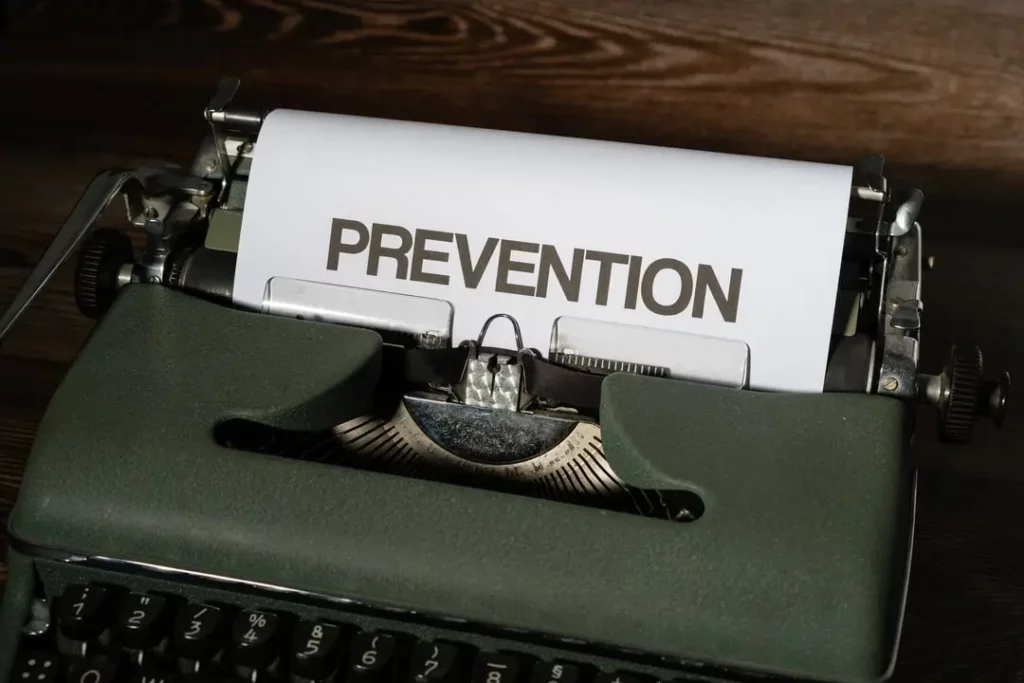
To avoid urine stains, encourage good hygiene practices, regularly clean the toilet bowl and base, install a splash guard, use toilet seat covers, and provide proper training and education on toilet usage.
1. Encouraging good hygiene practices
To prevent urine stains in toilets, it’s important to encourage good hygiene practices. This means reminding users to aim carefully and avoid splashing or overflowing the toilet bowl.
Regularly cleaning the toilet bowl and base is also crucial to preventing the buildup of stain-causing bacteria. Installing a splash guard can help minimize accidental spills, while using toilet seat covers can protect the seat from direct contact with urine.
Providing proper training and education on how to use the toilet properly can also make a difference in maintaining cleanliness. By promoting these practices, you can ensure a clean and hygienic bathroom environment for everyone.
2. Regularly cleaning the toilet bowl and base
To keep your toilet free from urine stains, it’s important to regularly clean both the bowl and the base. Cleaning the toilet bowl helps remove any existing stains and prevents them from becoming more stubborn over time.
Use a toilet brush and a cleaning solution (like vinegar and water) to scrub away any residue or buildup. For the base of the toilet, wipe it down with a disinfectant cleaner to ensure hygiene and prevent urine stains from accumulating.
Remember, consistent cleaning is key to maintaining a stain-free toilet.
3. Installing a splash guard
To prevent urine stains in your toilet, consider installing a splash guard. A splash guard is a simple device that attaches to the front of the toilet bowl and helps redirect any splashes or spills back into the bowl.
It acts as a barrier, preventing urine from getting onto the floor or surrounding areas. By installing a splash guard, you can significantly reduce the chances of urine stains on your toilet and make cleaning easier and more efficient.
Splash guards come in various designs and materials, such as plastic or rubber. They are easy to install and require minimal maintenance. Simply attach it securely to the inside lip of the toilet bowl using adhesive or screws, following the manufacturer’s instructions.
Ensure that it fits snugly to prevent any gaps where urine could escape.
4. Using toilet seat covers
To prevent urine stains on toilet seats, using toilet seat covers can be an effective solution. These covers act as a barrier between the seat and any potential stains. They are designed to fit most standard-sized toilet seats and are disposable for easy use.
When using a toilet seat cover, simply place it on the seat before sitting down. This will help protect the seat from urine and reduce the chances of stains. Toilet seat covers can be found in many public restrooms or purchased online or at stores that sell bathroom supplies.
By using these covers, you can ensure a clean and stain-free toilet experience.
5. Providing proper training and education on toilet usage
To prevent urine stains in toilets, it’s important to provide proper training and education on toilet usage. By teaching people how to use the toilet correctly, you can reduce the chances of accidents and spills.
Make sure to demonstrate the proper way to aim and flush, as well as remind them to close the lid after each use. Additionally, educate them about good hygiene practices like washing hands thoroughly after using the toilet.
These simple measures can go a long way toward preventing urine stains and keeping your toilets clean and fresh.
Frequently Asked Questions

1. What causes urine stains in toilets?
Urine stains in toilets can come from many things, like urine scale or not cleaning often.
2. What are some ways to remove brown and yellow stains from toilets?
You can use natural cleansers, baking powder, or dilute bleach as effective methods for removing urine stains from your toilet.
3. Are there any quick steps for removing urine stains from toilet seats?
Yes, the comprehensive guide includes tips for removing these stains quickly.
4. How can I prevent more stains on my toilet?
To stop new stains, perform good cleaning habits and check out our preventive measures for avoiding further staining.
5. When taking off the stain on my toilet seat what should I think about?
Consider factors such as the type of stain when using different methods of removal.
Conclusion and final thoughts
In conclusion, this comprehensive guide provides effective methods for removing urine stains from your toilet. By considering factors like the material of the toilet seat and using appropriate cleaning products, you can successfully remove these stains.
Additionally, implementing preventive measures such as regular cleaning and good hygiene practices will help keep your toilet stain-free in the future. Say goodbye to urine stains and hello to a clean and fresh bathroom!
